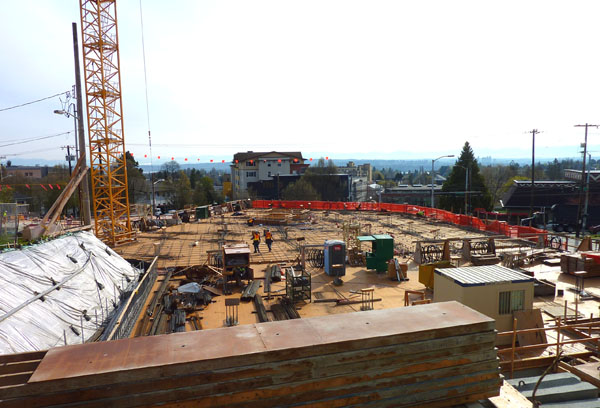Beyond The Requiem For Sprawl
Last year I wrote that “when the Harvard Business School types start hyping the decline of the suburbs, we can be pretty sure it’s game over.” Now, almost exactly one year later, an update: When the American-dream-worshipping Wall Street Journal is forced to ask “do home builders have a future?” we can be pretty sure they don’t.
As is becoming increasingly recognized, a host of well-documented and intensifying megatrends can be expected to upend the sprawling development patterns that have shaped how we live in the United States over the past half century. And one of the major casualties will be the large-lot single family home on the urban fringe. Mark Zandi, an economist with Moody’s Analytics, sums it up well in this Urban Land piece: “I can see a shift to multifamily housing and rental units. The [single-family] home ownership goal was laudable for about 25 years after the Depression, but now circumstances are different.”
The key paradigm shifts driving the coming transformation include:
- An existing supply of large single family houses sufficient to meet demand for that product for the next 20 to 30 years
- Rapidly evolving household types and sizes: empty nesters are seeking smaller housing, while at the same time, extended family arrangements are reducing demand for new housing
- A growing share of retiring Boomers, Gen Y, and to some extent Gen X that prefers low-maintenance housing in walkable, mixed-use environments
- Increasing awareness of the public health consequences of living a sedentary, auto-dependent lifestyle
- Rising gasoline prices and their effect on the cost of everything from commuting to building materials
- The restructuring of Fannie and Freddie that is likely to significantly reduce their ability to lend
- Possible elimination of mortgage interest tax deduction if the nation gets serious about deficit reduction
(A good source for details on these trends is the work University of Utah professor Arthur C. Nelson, e.g. this presentation.)
>>>
In Seattle, perhaps as much as anywhere else in the nation, the scenario is already beginning to play out. Currently in the Capitol Hill area alone, construction has just begun on eight apartment projects, and several more are beginning to stir. While most other real estate sectors are languishing, in Belltown ground was recently broken on a 654-unit market-rate apartment that, in terms of the number of residential units, will be the second largest in the city of Seattle (Harbor Steps has 730), and at 735 units per acre, reportedly will also be the State’s highest density residential building.
Meanwhile, developers that have traditionally focused on suburban single-family are busting moves into urban multifamily, as in the case of Pine Forest Properties, currently developing a six-story, 150-unit, mixed-use apartment in downtown Redmond.
Fortuitously, if the market can respond to the growing demand for urban living it’s a win-win for people and for the environment. And the first thing we need to do is simply get out of the way. That means doing away with public policy that impedes the desired transformation of the built environment, as well as preventing powerful status-quo private interests from trying to stave off the inevitable.
The second most important action we can take is to invest in infrastructure that supports transportation modes compatible with urban living, that is, transit, biking, and walking. In short, anything but more roads.
The longer we wait to acknowledge that it’s time to let sprawl rest in peace, the more grief we all will feel.



